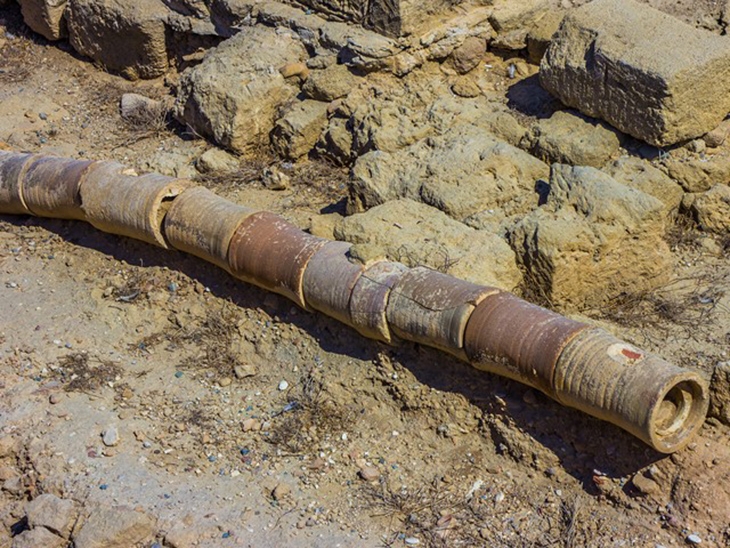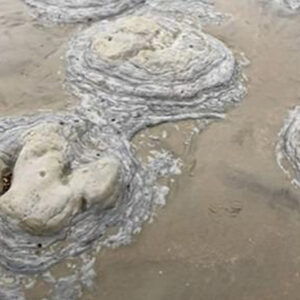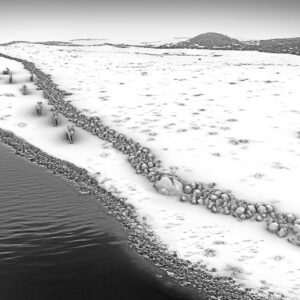
During the dawn of civic life among humans, a community of people in northeastern China devised a sophisticated drainage system to combat the frequent flooding in their exceedingly wet environment.
Harnessing their exceptional pottery craftsmanship, they ingeniously employed ceramic pipes to channel water from the elevated town of Pingliangtai into a network of drainage ditches, ultimately leading to the creation of a moat. This remarkable achievement, detailed for the first time in the journal Nature Water, marks a significant milestone in early human history for several compelling reasons.
Firstly, this may well be the world’s oldest known ceramic pipe system and is unquestionably the most ancient in China. Secondly, it offers an alternative perspective on the potential paths of human civilization. Rather than a scenario where control over hydrological resources was concentrated in the hands of centralized authorities and despots, this discovery suggests a narrative of communal organization and cooperative governance.
“There is no strong social stratification within and between settlements in the Eastern Central Plains,” says Zhuang Yijie. He is the co-author of the paper written. “Thus, there might be no pyramidal power structure in this region.”
There was once a prevailing notion proposed by Karl August Wittfogel, a German-American Sinologist, suggesting that the governance of water resources marked the inception of authoritarian state authority. This idea found its backing in the legendary narrative of Great Yu’s valiant efforts in quelling the Yellow River floods, followed by the emergence of the semi-mythical Xia Dynasty.
Nonetheless, contemporary scholarship has extensively refuted this notion, and the discoveries at Pingliangtai exemplify the profoundly communal nature of water administration during the late Neolithic period in China.
Water Everywhere
The excavation of the Pingliangtai site spanned from 2014 to 2019 and was conducted jointly by the Henan Provincial Institute of Cultural Heritage and Archaeology and Peking University.
“All members of our [study] team took part in the excavation,” Zhuang told WaL. “The site was first excavated in the last century and a set of ceramic drainpipes near the southern gate was revealed at that time. However, it was in 2016 when we realized there might exist a well-planned drainage system since several ditches running parallel to houses were found.”
This profound discovery was born out of the recognition that Pingliangtai serves as a compelling illustration of how environmental fluctuations, technological advancements, and societal structures came together to establish a system of ‘cooperative social governance’ in water management. This offers a distinct model for understanding the emergence of hydro-social dynamics in ancient East Asia, according to the authors.
“Because of our focus on water as intangible evidence of cooperative human actions, it also offers a unique perspective on the evolution of human cooperation,” they also said.
The primary environmental factor shaping the region was the monsoon climate. Some 4,200 years ago, in the Hauiyang District situated on the expansive Huanghuaihai Plain in Central China, covering an immense 387,000 square kilometers, the monsoon brought with it a consistent deluge of rainfall, averaging around 500 millimeters, or roughly 20 inches per month. This frequent rainfall led to prevalent alluvial flooding on the plain, with scattered elevated areas being the only suitable locations for permanent settlements.
The abundant water supply made the region fertile for agriculture, leading to the widespread cultivation of millet and rice among the communities in Huaiyang. This agricultural shift triggered significant socioeconomic transformations, affecting dietary habits, land usage, and population dynamics. It ultimately gave rise to the development of substantial hilltop towns in the area, similar to the fortified settlement of Pingliangtai, as people adapted to their changing environment.
“In this wet environment, the Pingliangtai people developed innovative hydraulic technologies to tackle acute and chronic problems on water management,” the authors added. “One of the chronic problems facing Pingliangtai society was the severe weathering of earthen architecture”.
Soil examination reveals that certain mudbrick structures had to undergo five successive rebuilds because of water erosion and damage. To enhance their durability in the humid environment, these mudbricks were frequently fortified with straw, grass, and calcium carbonate.
One of the pioneering technologies that might have initially enabled habitation in this region was perhaps the earliest recorded use of ceramic pipes for a drainage system.

Another Great Innovation from China
“Pottery is an essential element of Neolithic China, the earliest of which could date back to 20,000 years ago,” Zhuang said. “Late Neolithic China witnessed significant breakthroughs in pottery technologies, the most important of which is the wheel technology”.
“People at Pingliangtai were proficient in wheel throwing, thus, they could make a vast bulk of daily pottery as well as ceramic drainpipes. Polished stone tools are also found at the site… [and] ruts in the road indicated the wheel [sic], unfortunately, we haven’t found a wheel by now,” he added.
In the southeastern section of the enclosed settlement, rows of mudbrick houses ran perpendicular to the road, featuring drainage ditches positioned both in front and behind them. These ditches were interconnected at various points by segments of ceramic drain pipes, somewhat akin to modern culverts found beneath roadways. Additionally, another set of ditches was constructed along the north-south axis of the site, likely running parallel to the road. The ditches were regularly cleared of debris, evident from the accumulation of fine silt at their bottoms.
These ceramic pipe segments measured approximately 30-40 centimeters in length and 20-30 centimeters in diameter (equivalent to 12×15 and 8×12 inches respectively), and they were designed to fit together, with the wider ends connecting to the narrower ones, resembling stacked cups. Most of these pipes followed the course of the road leading towards the southern gate of the settlement, where archaeologists uncovered the largest and most actively maintained ditches.
Taken as a whole, this drainage system served the purpose of encircling the city like the moat surrounding a medieval French castle. However, Zhuang couldn’t definitively confirm whether the moat represented the ultimate endpoint of the entire system or if it served multiple functions, including both drainage and defense.
“Pingliangtai was a medium-sized community; our estimation of the population based on the number and capacity of the rowed houses suggests 460–600 people at the time,” the authors mentioned. They also highlighted the fact that this would have required diligent communal engagement with all of these public works, the wall included.
It is estimated that due to the collective operation of the drainage system, which began at the level of individual households, there would have been minimal social stratification. This hypothesis finds support in the fact that there was little disparity in wealth among those buried in a town cemetery near the southern gate, as evidenced by the grave goods discovered.
In the annals of Chinese imperial history, there have been numerous instances of centralized, despotic labor organization for irrigation and water management. Qin Shi Huang, the inaugural emperor of the Qin Dynasty, famously commissioned the construction of the Grand Canal, which would go on to become the world’s longest artificial waterway by 600 CE during the Sui Dynasty.
Around the same time and in close proximity to Pingliangtai, the Liangzhu Culture and its city-state undertook China’s oldest water-control endeavor. This impressive project comprised an intricate network of dams, levees, and ditches. However, in stark contrast to Pingliangtai, this site exhibited significant social stratification, featuring palace complexes, an elite society, and the presence of luxury goods.
“In contrast to the… viewpoint that often posits a linear relationship between social power and the organization of hydraulic enterprises, water management at Pingliangtai on the Eastern Central Plains was not simply a top-down or bottom-up operation,” the authors said in conclusion. “Rather, the collective human actions or ‘collective struggles’ on water management at both household and communal levels in a precarious monsoonal setting gave rise to the cooperative social governance without a centralized hierarchy.”
What are your thoughts? Please comment below and share this news!
True Activist / Report a typo


